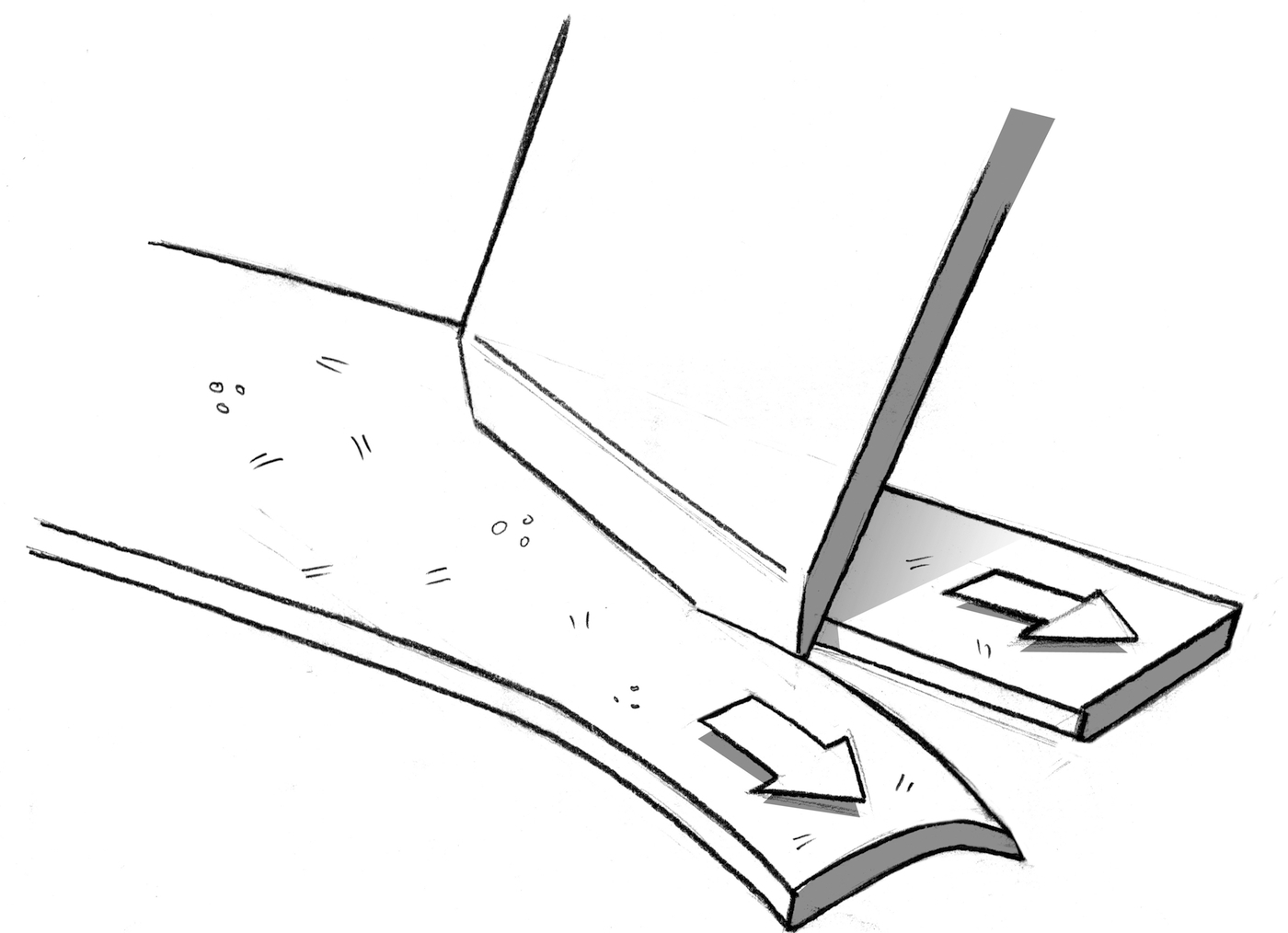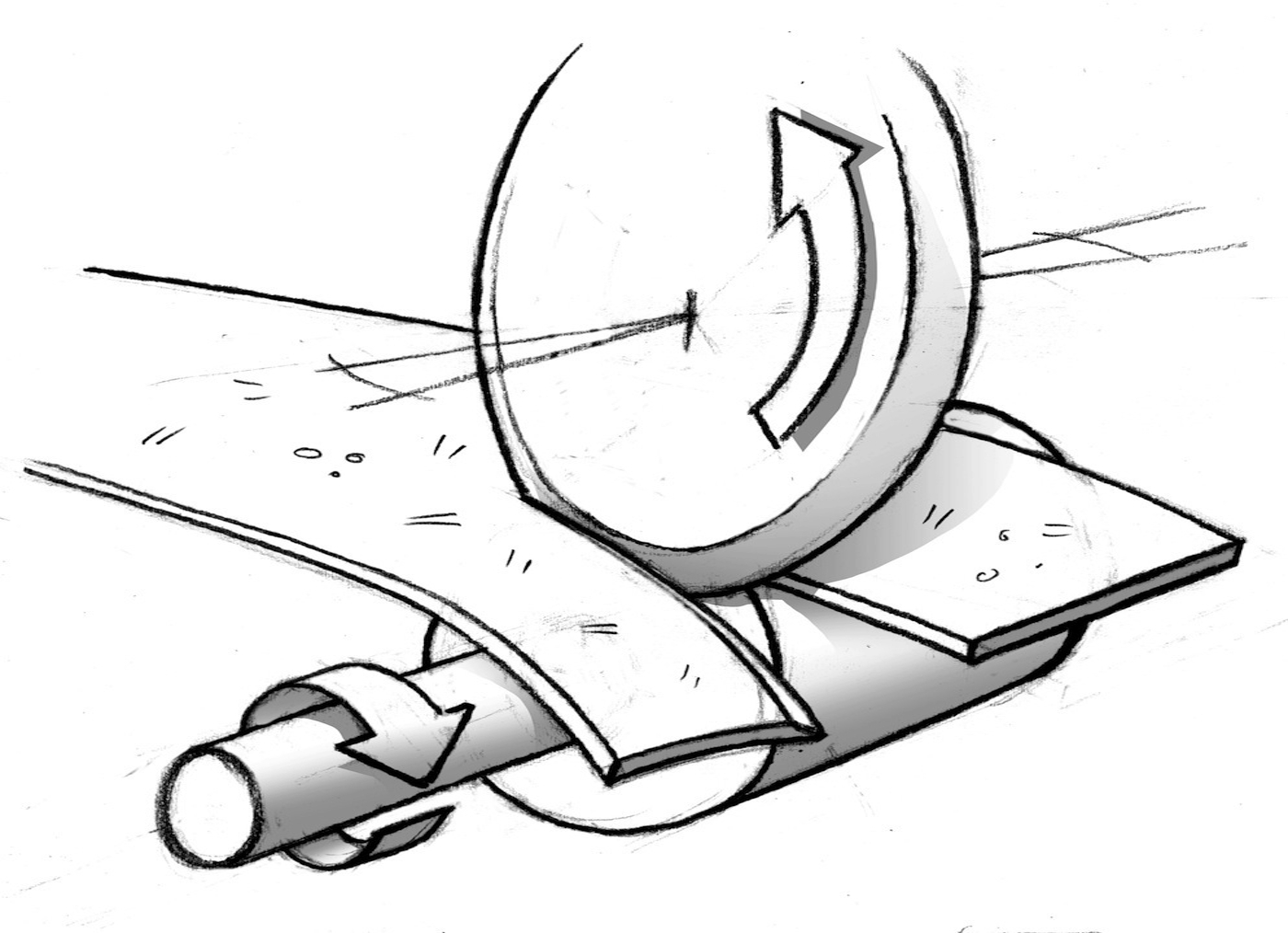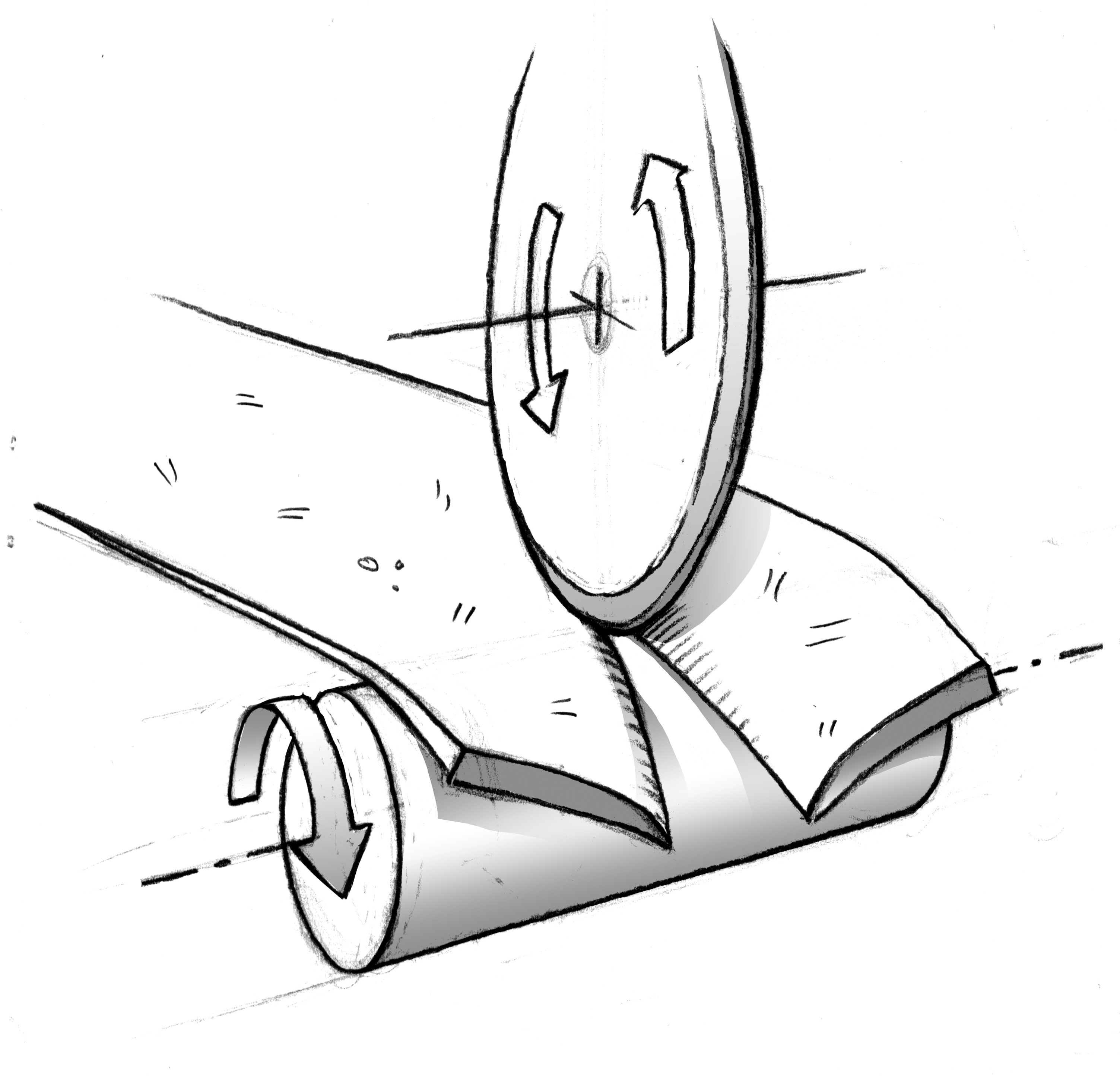Industrial slitting is utilized across sectors such as manufacturing, packaging, and textiles to customize the dimensions of materials like paper, plastic, metal, and fabric. Whether enhancing efficiency in production lines or enabling customization for end-users, mastering slitting techniques is essential for optimizing material utilization and meeting diverse industry demands. In this text, we explain the three different types of slitting, including their applications and advantages.
Types of Slitting
There are three types of slitting:
Razor Blade Slitting (also known as ‘Free slitting’)
Shear slitting
Crush slitting (also referred to as ‘Score slitting’)

Razor Blade Slitting (Free Slitting)
In razor blade slitting (or free slitting), the web materials are subjected to tensile stress by passing the extremely sharp slitting edge of a thin blade. Is the most simple and cost-effective cutting method and the only method for very thin film.

Shear Slitting
In shear slitting, the web materials are slit in the nip between two overlapping metal disks which create stress in the shear mode to sever the product. Is the most commonly used method, but is the most demanding to control specific operating parameters for high quality slitting.

Crush Slitting (Score Slitting)
In crush slitting (or score slitting) the web materials are subjected to compressive stress using a rotary tool and anvil. Less cut quality but user fiendly.
Razor Blade, Shear or Crush Slitting: A Comparison
The choice of slitting technique depends on factors such as material thickness, desired cut quality, initial investment budget, and operator skill level. Each slitting method has its advantages and limitations, catering to different production requirements and operational scenarios:

Web Thickness:
Razor Blade Slitting: Suitable for materials with thicknesses exclusive up to 20 µ and extending up to 200 µ.
Shear Slitting: Effective for materials with thicknesses starting from 30 µ.
Crush/Score Slitting: Versatile, with no specified upper limit, even accommodating materials above 5 mm deformation.
Quality of the Cut:
Razor Blade Slitting and Shear Slitting both provide excellent cut quality.
Crush/Score Slitting typically yields a poorer to medium-quality cut.
Investment:
Razor Blade Slitting requires a low initial investment.
Shear Slitting demands a higher initial investment due to equipment complexity.
Crush/Score Slitting falls in the medium range for investment.
Technical Skill Required from Operator:
Razor Blade Slitting is relatively easy to operate, requiring minimal technical skill.
Shear Slitting demands experienced operators due to the need for precise control.
Crush/Score Slitting requires an average level of technical skill from the operator.
High Quality Razor Blades for Slitting
At Fortisblades, we understand the critical role of razor blades in industrial slitting. Our high-quality blades ensure precise and efficient cutting, contributing to excellent cut quality and optimized material utilization. With Fortisblades, experience the ease of operation and reliability required for superior slitting performance. Choose Fortisblades for your industrial slitting needs and elevate your production efficiency to new heights.
